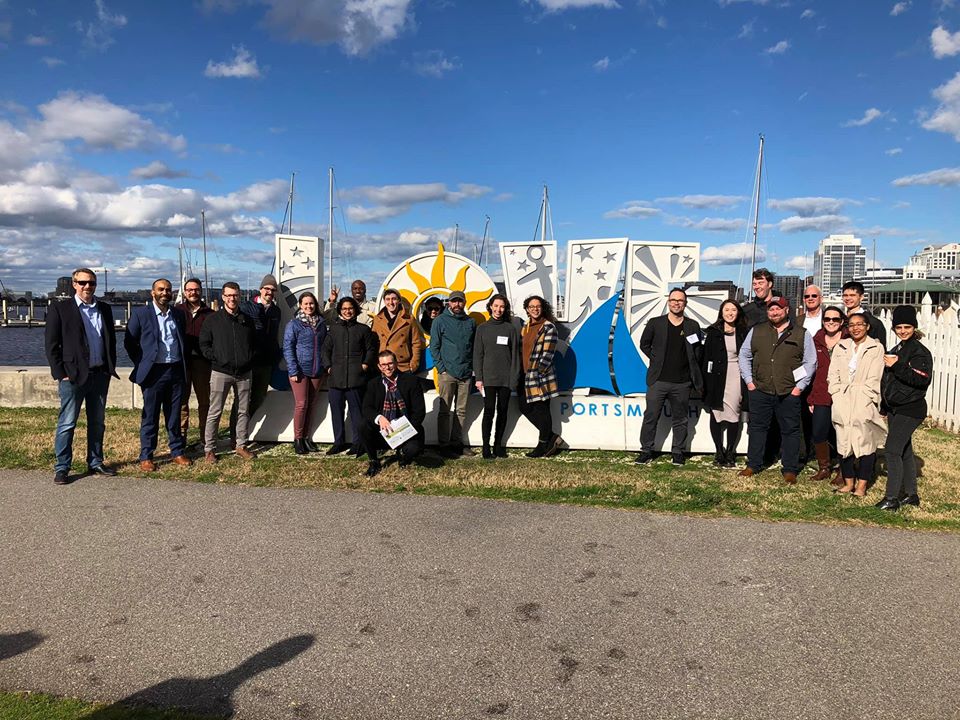
Get sixteen people in a room with different backgrounds, strengths, design philosophies, and passions, and what do you get? An incredible array of concepts that address a variety of problems in order to arrive, not to a single solution, but to a strong combination of ideas.
This is what the ELA class of 2020 has been focusing on for the past two months. In January the class got together for the first time, and through ‘Pecha Kucha’ presentations, students had three minutes to introduce themselves to fellow classmates and members of the executive committee. After an overview of the program, a team photo and a delicious lunch, the team got to hear from renowned design professionals in the industry. Bryan Clark Green Ph.D., LEED AP BD+C talked about the importance and emergence of our profession, followed by Kelly O’Keefe who gave an inspiring lecture on the importance of creative thinking and problem solving through design.
A month later, the team met in Portsmouth, VA for its second session of the program. It was then that the project brief was revealed. The class has to develop a project that focuses on promoting the growth of Downtown and Olde Towne Portsmouth districts. During the session, we heard from Brian Swets, AICP and Robert Moore, Director of Economic Development, about the city’s geography, history, culture, economy, social structure, and the city’s development plans. Afterward Nathan Lahy, PLA, ASLA discussed how to effectively and creatively transform underutilized “leftover spaces”. Following a walking tour led by Carl Jackson, AICP, Dick Gresham showed the team how to utilize and implement Strengths, Weaknesses, Opportunities, and Threats (SWOT) analysis. The Friday session culminated with a presentation from Georgie Márquez, AIA on Crime Prevention Through Environmental Design (CPTED).
On Saturday morning the team got together to begin strategizing on how to tackle this very intentionally vague brief. Everyone had an opportunity to voice their thoughts on what this project is, who the clients are, and how is a group of 16 ‘students’ from different cities in Virginia going to approach this challenge. After long discussions, it seemed that similar concepts emerged in different forms, but these ideas were still too fresh and unpolished to decide on just one. Ideas were written down, notes were taken, polls were sent out, folders were created, calls were scheduled, and action items were assigned. The team left the meeting excited and motivated about the future sessions and project discussions. As not to lose any momentum, the team has kept in contact and is now working on refining ideas to select a client, a project type, and a scale to successfully complete the challenge that has been presented to them.
The class will meet again this month to discuss individual strengths and professionalism. This session will help the class explore and understand their top strengths, while also guiding them to recognize their roles within the group. The team is looking forward to meeting once again to further the discussion in person about the development of the project.
Submitted by Gabriela Orizondo, Assoc. AIA, 2020 ELA class member.
